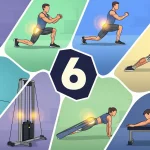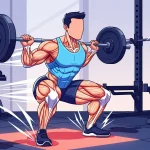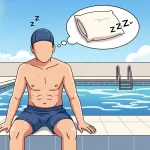Fit People, have you ever woken up the next morning after an intense workout and suddenly felt sore, stiff, and achy all over your body?
Relax, that’s completely normal! Post-workout muscle soreness, also known as Delayed Onset Muscle Soreness (DOMS), is your body’s natural response to new stress placed on the muscles. It may feel uncomfortable, but it’s actually a sign that your muscles are adapting and building themselves to become stronger.
Instead of just enduring the pain, there are several effective ways you can reduce soreness and speed up recovery. Here are 7 proven tips from Grand Focus Fit to help you bounce back faster!
1. Cool Down Properly
Don’t just lie down right after a workout. Take 5–10 minutes to do gentle static stretches.
Cooling down helps lower your heart rate gradually, improves circulation, and allows your muscles to relax after working hard. Focus on the muscle groups you used the most during your session.
2. Stay Hydrated
Water is not just for quenching thirst, it is vital for muscle function and recovery. Dehydration can worsen muscle soreness because it disrupts metabolism and slows the removal of waste products from your muscles.
Make sure you drink enough water before, during, and after exercise.
3. Fuel Your Body with the Right Nutrition
What you eat after a workout is just as important as the workout itself.
Consume protein to repair muscle fibers and carbohydrates to restore glycogen stores within 30–60 minutes after training.
Examples include a protein smoothie, eggs, or chicken breast. Don’t forget antioxidants from fruits and vegetables, which help reduce inflammation.
4. Cold Shower or Contrast Bath
It may feel challenging, but a cold shower or cold compress on sore areas can reduce inflammation and numb nerve sensitivity, easing soreness.
Some athletes even use full ice baths. As an alternative, try a contrast shower by alternating between warm water (3–5 minutes) and cold water (1–2 minutes) for several rounds. This helps boost blood flow and circulation.
5. Light Massage or Foam Rolling
A light massage or using a foam roller can do wonders for loosening stiff and tight muscles.
These movements increase blood flow, help flush out waste products, and speed up the healing process. Roll slowly and focus on the areas that feel most sore.
6. Get Enough Quality Rest
Never underestimate the power of sleep. While you sleep, your body performs most of its repair and regeneration processes. Aim for 6–8 hours of quality sleep each night.
Lack of sleep slows muscle recovery and prolongs soreness.
7. Consider Physiotherapy or Alternative Therapy if Pain Persists
If your post-workout soreness feels too intense, unbearable, or doesn’t improve after several days despite trying the tips above, it’s time to seek professional help.
Sometimes, severe muscle pain may indicate something more serious that requires special treatment.
One option worth considering is physiotherapy or innovative alternative therapy. For example, if you are in the Bintaro, Kebayoran Baru, Rawamangun, or Puri Indah area, Bio Healing Center is a trusted solution for addressing muscle and joint pain.
Conclusion: Muscle Soreness Is Normal, but Don’t Ignore It
Muscle soreness is part of the journey toward becoming stronger. But remember, learn to differentiate between normal soreness and signs of serious injury.
If you want faster recovery and safer workouts, Grand Focus Fit provides stretching areas, foam roller zones, and trainers who can help adjust your program while you are still sore.
👉 Stay #StayFocus and treat your body like your most valuable asset, not a disposable machine!





